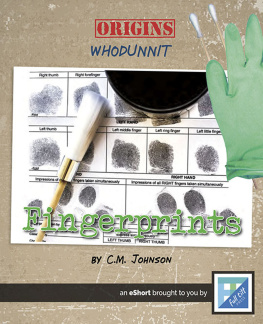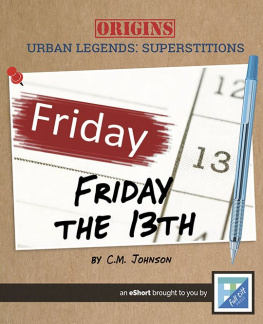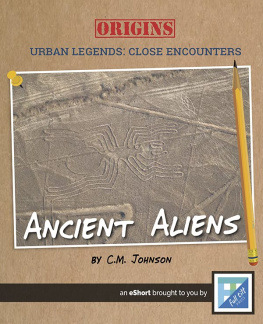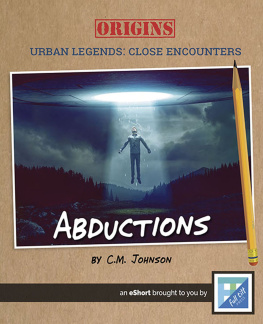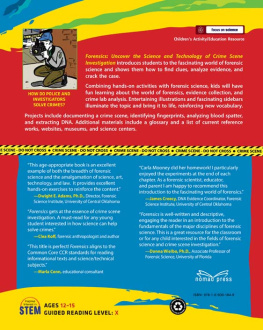
FINGERPRINTING
2 Whodunnit
[Fingerprinting]
All ngerprints are unique and
do not change as a person
ages. This makes them useful
for identifying someone, or
linking them to a crime.

Introduction
Look closely at your nger. You
will see tiny grooves. ese lines
cover our hands and feet. ey
help us grip things. Our ngers
are also covered with sweat
glands. Sweat clings to these lines
like ink, causing us to leave traces
of ourselves wherever we go. Since
no two ngerprints are the same,
those traces are like signatures.
China was ahead of most of the rest
of the world when it came to this
discovery. As early as 700, people
in China used ngerprints as signatures.
Europe and South America caught up in
the mid-1800s.
When studying crimes, police use the
theory of transfer . When two objects
meet, some trace of that meeting can be
found. at trace might be a ngerprint.
Once it is found, this trace can be
read. It might tell us when something
happened. It can clue us into a chain of
events. Most of all, police hope it can tell
them who was there at the scene of the crime.
DID YOU KNOW?
In Argentina in 1891,
Juan Vucetich created the
first fingerprint ID system
for use in fighting crime.
Forensics
transfer: to pass from
one person, place, or
thing to another
People in ancient Babylon, a city
in the area of modern-day Iraq,
signed contracts with their
ngerprints about 4,000 years ago.

FINGERPRINTING
Forensics in Action
In the early 1900s, the people of London
were afraid. Several recent murders had
gone unsolved. e London police had
even failed to catch the terrible Jack the
Ripper. In 1902, when two shopkeepers
were beaten to death, police felt the
pressure to nd this killer. e publics
faith in them was at stake. But the police
had nothing to go on to solve this new
crime. en an ocer saw an oval
smudge on a cash box. He gave it to
Charles Collins.
DID YOU KNOW?
In notes that were printed
in London newspapers,
"Jack the Ripper" made
fun of the police for
failing to catch him.
4 Whodunnit
serial killer: someone
who murders three or
more people over a
period of time, with breaks
between the killings
In the late 1800s, a famous serial killer
named Jack the Ripper killed at least ve
women in the Whitechapel area of London.

Collins was in Scotland Yard s ngerprint division. e division was
only one year old. Collins was eager to try out his new system. He felt let
down when the ngerprint did not match any others he had on le. But
when brothers Alfred and Albert Stratton became suspects, Collins found
a match. e cash box print had been made by Alfreds thumb. In 1905,
the case went to trial. e police were nervous. e public did not know
very much about ngerprints. Just a few months before, prints had been
used for the rst time to convict a person in an English
court. But he was a petty thief. Would a jury nd
two men guilty of murder based on a smudge?
Would they go free? Would the Yard get blasted
for messing up another case? On May 23, 1905,
the jury gave a thumbs-up to the new technology.
e men were found guilty and hanged.
Forensics
Scotland Yard: the
headquarters of the
London police force
petty: small or not
very important
To make a print visible on a hard surface
like a metal cash box, police use a soft
brush to dust powder over the area.

FINGERPRINTING
ad
In China, fingerprints are
used to identify documents
and clay sculptures.
1684
In England, Dr. Nehemiah
Grew writes about his work
using one of the first
microscopes to spot the ridge
patterns on fingertips.
1823
In Poland, professor Jan
Evangelista Purkyne notes
that fingerprint patterns
fall into several types.
1880
In a letter to the journal
Nature
,
Scottish missionary Henry
Faulds urges Scotland Yard to use
fingerprints to tag criminals.
1892
In Argentina, police
use fingerprints to
get a confession out
of a mother who killed
her two children.
News of the case does
not reach Europe for
many years.
6 Whodunnit
History of Forensics
Even aer ngerprints were discovered, hundreds of years passed
before it was well-known that they could be used in ghting crime.

1980 - 1985
The Japanese National
Police Agency
creates the world's
first computerized
fingerprint database.
1897
In India, Azizul Haque
invents an effective way
to classify fingerprints.
This makes them a good
tool for the police.
1904
The United States Bureau
of Identification creates
a fingerprint database.
1911
Thomas Jennings is
the first American
convicted of murder in
the United States based
on fingerprint evidence.
2011
The FBI replaces its fingerprint
computer with Advanced
Fingerprint Identification
Technology (AFIT). The new
system improves matching
accuracy from 92% to 99.6%.
Forensics

FINGERPRINTING
Crime and Fingerprinting
Even aer it was discovered that ngerprints are unique marks, it
would take a long time before they could be used as a standard tool for
solving crimes. Fingerprints fall into three

